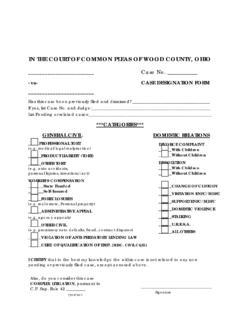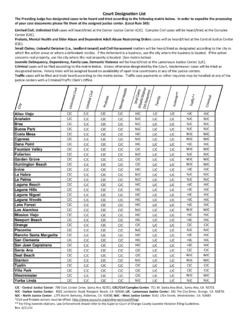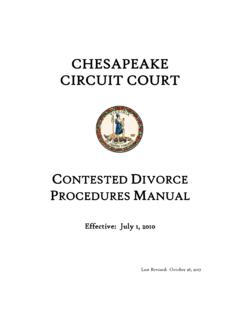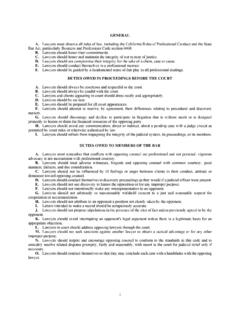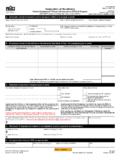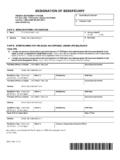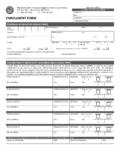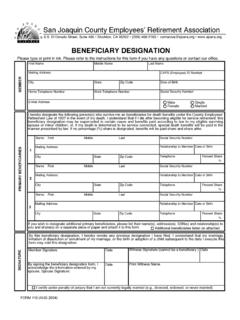Transcription of MiMo/BISCAYNE BOULEVARD HISTORIC DISTRICT
1 MiMo/BISCAYNE BOULEVARD HISTORIC DISTRICT Designation Report City of Miami REPORT OF THE CITY OF MIAMI PRESERVATION OFFICER TO THE HISTORIC AND ENVIRONMENTAL PRESERVATION BOARD ON THE POTENTIAL DESIGNATION OF THE MiMo/BISCAYNE BOULEVARD HISTORIC DISTRICT (FROM NE 50TH STREET TO NE 77th STREET) Prepared by Ellen J. Uguccioni for Janus Research, Consultants Passed and Adopted on June 6, 2006 _ Resolution No. 2006-59 1 CONTENTS: I. General Information 3 II. Significance 4 III. Description 11 IV. Planning Context V. Contributing and Non-Contributing Structures 21 VI. Bibliography 22 28 3 I. GENERAL INFORMATION HISTORIC Name: Not applicable Current Name: MiMo/BISCAYNE BOULEVARD HISTORIC DISTRICT / (area also known as The Upper East Side) Location: Both sides of biscayne BOULEVARD from Northeast 50th Street, north to NE 77th Street Present Owner: Multiple Owners: Complete list of owners available from the Planning Department Present Zoning DISTRICT : Mixed: office, residential, commercial HC Overlay DISTRICT : HC-1 Tax Folio Numbers: Multiple Numbers, A complete list of tax folio numbers is available in the Department of Planning and Development HC Zoning Classification: HISTORIC District4 II.
2 SIGNIFICANCE Statement of Significance: The importance of biscayne BOULEVARD cannot be overemphasized as it began and still remains a principal north/south artery thorough Miami. The buildings constructed along this wide corridor illustrate Miami s changing fortunes; its changing demographics and the resultant change to the character of this principal thoroughfare. The construction of biscayne BOULEVARD from Downtown Miami northward did not begin until 1925. Before that travelers from the north would enter Miami on West Dixie Highway along NE 2nd Street, angling across the FEC Railroad tracks at NE 36th Street. The realization of biscayne BOULEVARD was the result of millions of dollars of private capital, a stunning demonstration of entrepreneurship during a period when the financial health of Miami was in great jeopardy.
3 The abrupt fall of the Miami boom was cushioned in the first part of 1926 by the conception of biscayne BOULEVARD . Like the anesthesia which prepares our nerves for the shock of the surgeon s knife, the creation of biscayne BOULEVARD kept Miami going during the summer of 1926 despite the discovery that $50,000 lots no longer could be sold for one-tenth of that amount or that the summer tourist season of 1925 was nothing but a delusion. --Kenneth Ballinger Miami Millions 1936 The men responsible for the construction of biscayne BOULEVARD , Hugh Anderson and Roy C. Wright, partners in the Shoreland Company, had made huge investments in the Miami area. In 1924, Anderson purchased a 1,600-acre tract north of Little River to build America s Mediterranean, the community of Miami Shores. When sales were opened on December 4, 1924, over more than $ million in real estate was sold.
4 Only ten months later, the Miami Shores Company sold over $33 million of land. With this capital in hand, the partners prepared to address a critical component in their formula for success the creation of a BOULEVARD that would serve the residents of Miami Shores by connecting them to Downtown Miami. During the real estate boom, the building of roadways in Miami simply could not keep up with the frantic pace of development. As a result, traveling conditions were less than ideal. Kenneth Ballinger described it like this: Traffic conditions were so bad during April 1925 that motorists and officials alike ran temperatures all day long. Originally adapted to horse and mule 4 vehicles, Miami streets during the early motor age had little bothersome congestions. But suddenly, these streets were filled with vehicles from every other state, including the Bronx, all competing with the home boys to get somewhere in a terrific hurry.
5 --Ballinger, Miami Millions, 1936 For Anderson and Wright the building of biscayne BOULEVARD was a monumental task as its course ran through both improved and unimproved sections of the city, and required millions of dollars to complete. The partners could not begin the project until they acquired a tract of land owned by Charles Deering that encompassed some nine-city blocks starting at NE 2nd Avenue. On December 5, 1925 the sale was finally completed. Ten days later, construction began on this impressive roadway that would be 100 feet wide and feature the finest of architectural designs for buildings containing a rich variety of goods and services intended for an upscale clientele. In order to build biscayne BOULEVARD the Shoreland Company purchased not only land, but also blocks where buildings already existed. biscayne BOULEVARD began at SE 2nd Street at the gateway to the gardens of the former Royal Palm Hotel.
6 To accommodate the new BOULEVARD eighty-five buildings were demolished, at least 12 houses were moved to new locations, and several houses were cut in half or had their front porches removed. Unfortunately the Shoreland Company was unable to complete the work, and in1926, was bought out by Henry Phipps of the Steel Corporation. The Phipps family formed the biscayne BOULEVARD Company, later known as Bessemer Properties, and completed construction of the BOULEVARD . They also purchased most of the property fronting on biscayne BOULEVARD between NE 13th Street and NE 40th Street, with the intention of making it the premier shopping area in Miami. biscayne BOULEVARD was opened to automobile traffic in March 1927. The BOULEVARD extended north until it reached NE 55th Street, where it merged to become US Route 1. At the time, US 1 was known as Federal Highway. The highway was still under construction and would eventually be built through to Jacksonville.
7 The construction of buildings fronting onto biscayne BOULEVARD Street did not begin in earnest until the 1940s. For the most part, construction in the northeast was limited to single family residences. Beginning in 1921, a series of plats were filed that did include a few buildings on the BOULEVARD , but they were incidental to the residential subdivisions described in these plats. Those plats included Bay Shore Unit #4, Belle Meade, Baywood and Aqua Marine. The financial strength of the region was weakened by a series of events that began with the devastating hurricane of September 1926. From then on, the ceaseless real estate sales began to dwindle, finally ending in economic disaster. Building in the Greater Miami area was limited between 1928 and 1934, as the region struggled out of the Depression. In his 1949 book, History of Dade County 5 Florida , Tracey Hollingsworth recounts the turbulent years of Dade County s construction activity.
8 The value of building permits issued for the City of Miami in the two decades that spanned the Boom, Bust, Depression and Post War growth were: 1921: million 1924: 17 million 1925: 60 million (The height of the building boom) 1927: million (The end of the boom) 1928: million 1929: million 1930: million 1931: million 1932: million 1934: million 1948: 30 million Construction activity along biscayne BOULEVARD , north of NE 50th Street follows the pattern expressed in these financial statistics. There are very few buildings that date from the 1920s (as the focus was on residential and not commercial construction), but after 1934 the growth of the BOULEVARD escalates to culminate in its heyday during the 1950s. The war that broke upon the people of the United States late in 1941 ushered in a new era in Florida that was to set off a postwar boom that would transform the economy, push the state far up the list in population rank, and create vast problems arising from rapid growth in every direction.
9 --Carlton Tebeau, A History of Florida By the mid-1950s, Americans abandoned the restraint that was a consequence of the Depression and World War II, to begin an era of unprecedented prosperity. Following World War II, America moved to the suburbs in droves, abandoning the inner city. The nation became an automobile culture, possessing a freedom of movement previously denied them. The increase in automobile travel led to the development of tourist courts and motels. biscayne BOULEVARD possesses a wealth of motor courts and motels constructed in the early 1950s. They are representative of a class of buildings that once dominated the streets of Miami. 6 The Motel Capital of Miami _____ Because biscayne BOULEVARD was also a part of Highway 1, the north-south artery leading from Key West to Maine, it guaranteed the BOULEVARD s strategic location as a place for motels catering to the automobile-borne tourist.
10 The project (the construction of biscayne BOULEVARD ) is regarded as a striking evidence of the increasing influence of the automobile in bringing about the reconstruction of streets and boulevards and to meet the demands of automobile traffic. --The New York Times, October 17, 1926 In this 1926 article, the New York Times reflected on the challenge that more automobiles would bring to cities across the nation. Their concerns were prophetic, foreshadowing the phenomenon of the1950s, when a new leisure class hit the road . The word motel is first thought to be associated with the Milestone Mo-tel in San Luis Obispo, California that opened in 1926. The word motor combined with hotel inferred that these accommodations were designed for the highway traveler. During the early development of the industry, there were also a number of other labels that described these highway respites, and included: motor court, tourist court, motel court, hotel court and cottage court.

